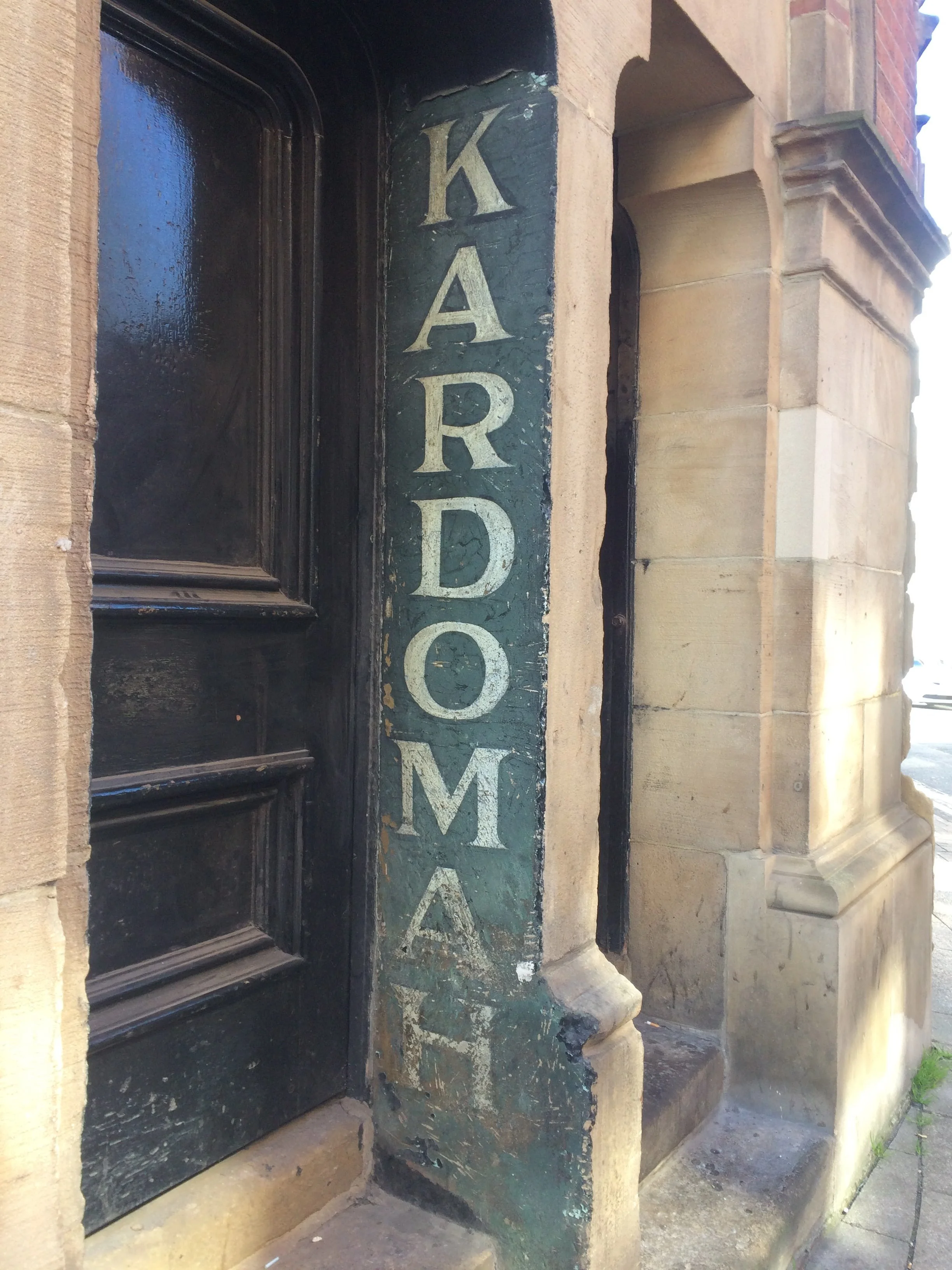CAFE CULTURE OF THE 50S
WRITTEN BY Hayley Flynn
READING TIME: 3 minutes
The Kardomah Cafes of Manchester and how cafes changed the city.
Upon arriving in Manchester during the 1950s to work for The Guardian, novelist Michael Frayn asked where in the city one could expect to find the artists’ quarter - he was answered with a peel of laughter. But proof that there was indeed a haven for artists’ back then can be found at the Venetian Gothic Memorial Hall on Albert Square. The layers of paint that had obscured it for years have now all but vanished and in the doorway of this listed building you can clearly see a sign for one of the Manchester branches of the Kardomah Café.
The Kardomah Cafés originated in Edwardian times and garnered a reputation amongst the bohemian as the place to be seen. In fact, it was so popular a place that the Welsh branch of Kardomah became the meeting point for Dylan Thomas and the eponymous ’Kardomah Gang’; a gathering of painters, writers, artists and musicians who met regularly in the Swansea café.
Opening from around 1929 onwards, our own little Lost Generation could be found here for it was in one of the Manchester Kardomah’s that William Turner and L S Lowry would meet to famously not talk about Lowry’s work. It’s was at the Piccadilly Gardens branch of the chain (later a Lyon’s) that Lowry, in 1957, opened a letter from a 13 year old girl asking him for artistic advice. Lowry looked up from the page only to see a bus heading to the same town as noted in the letter, he boarded the bus and paid her a visit. The unlikely pair struck up an avuncular relationship and the girl, herself named Lowry, became the eventual heir to his estate.
There were at least three of these cafes in Manchester with one at St Anne’s Square that had a large Arabic following, Albert Square, and a final one at Piccadilly Gardens that was architecturally ornate and Moorish in style.
The cafés welcomed those who perhaps did not feel welcome elsewhere, be that down to sex, religion or ethnicity. Over the years the cafes kept up with the times and by the 1960s, just prior to their demise, they were the haunts of many young Mods.
During the peak of their popularity the cafés were always busy but we’re treated with more of a grandeur than we grant coffee shops today; they were a night out for many customers and so they would dress in best hats and gloves and sit around waiting to be seen as they ate herring roe on toast and listened to live jazz.
The plush interiors of the London and Manchester branches were the work of Sir Misha Black, who is perhaps more well known for designing the City of Westminster street signs, the 1978 London Transport moquette (those iconic geometric orange and black seat covers) and co-founding the Design Research Unit (a consultancy specialising in architecture, industrial design and graphics).
The Kardomah chain was founded in Liverpool and predominantly based in the UK but a handful made their way to Paris, Sydney and even a fictional Kardomah can be seen in Brief Encounter as the location of the lovers’ tryst.
After the Kardomahs were closed and Manchester began to welcome and celebrate urban street culture, these dark cafes of yesterday were forgotten as Manchester pointed an ashamed finger at itself as a city that was living behind closed doors. The city council focussed upon investing in public spaces and encouraging urban culture and street life in line with the councils arts and culture strategy. Couple this with the eventual smoking ban and Manchester became a city living very much outdoors, but Kardomah’s ghost is still here and it’s pointing out the glaringly obvious oversights in our ‘cafe culture’, in our reluctance to utilise the three most obvious urban spaces for cafe life in the city (besides that wonderful street level car park on Aytoun Street) - and of course, they are the three sites of Kardomah itself; Albert Square, St Ann’s Square, and Piccadilly Gardens. Before cafe culture Kardomah already had the locations nailed.
These were beat clubs before beat. Coffee shops before Starbucks. Cafe culture before Canal Street.
Originally published by Now Then issue 2. The full (and quite beautiful) version of the magazine can be read here.



